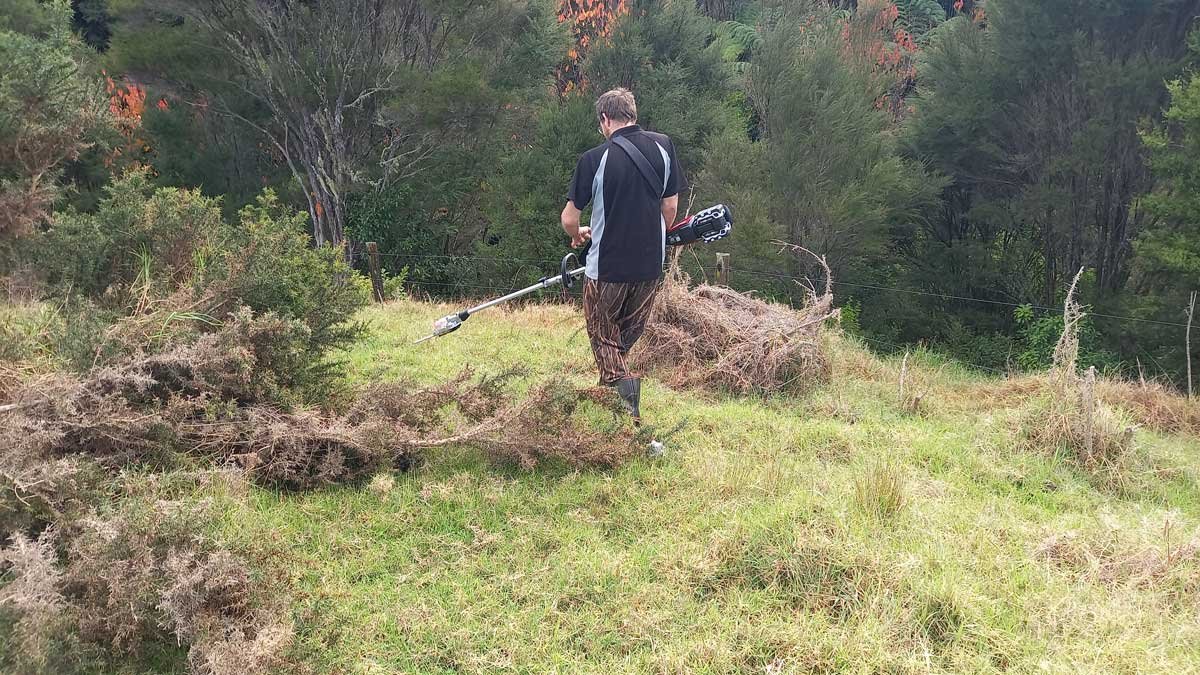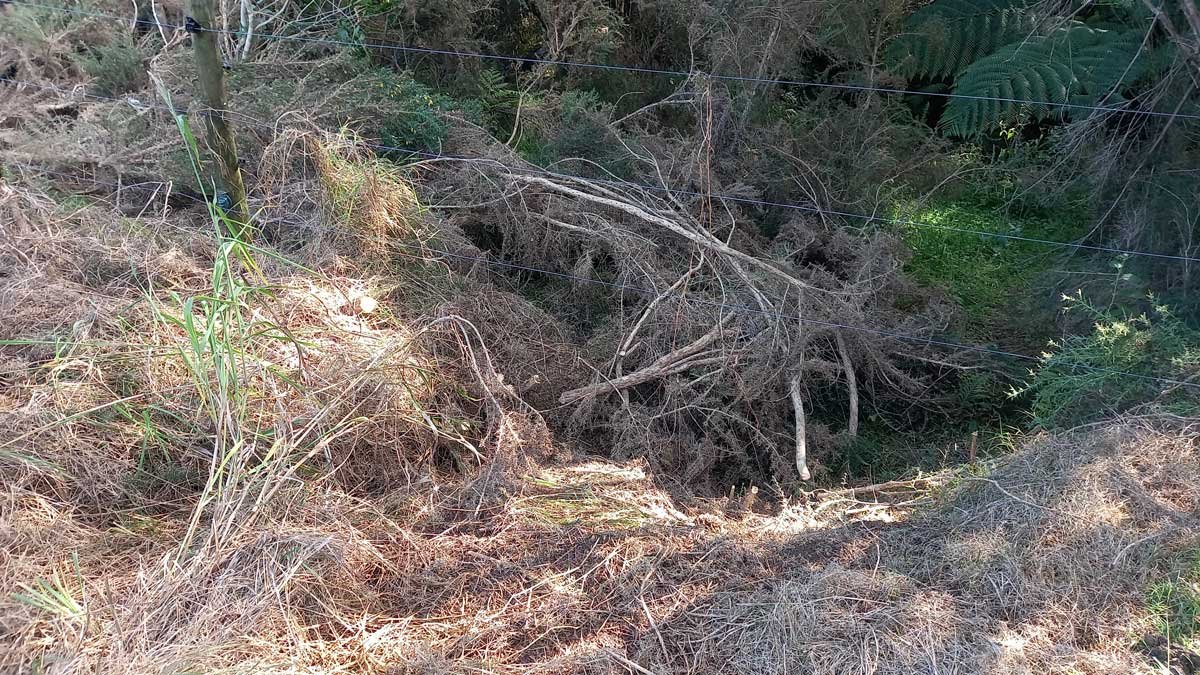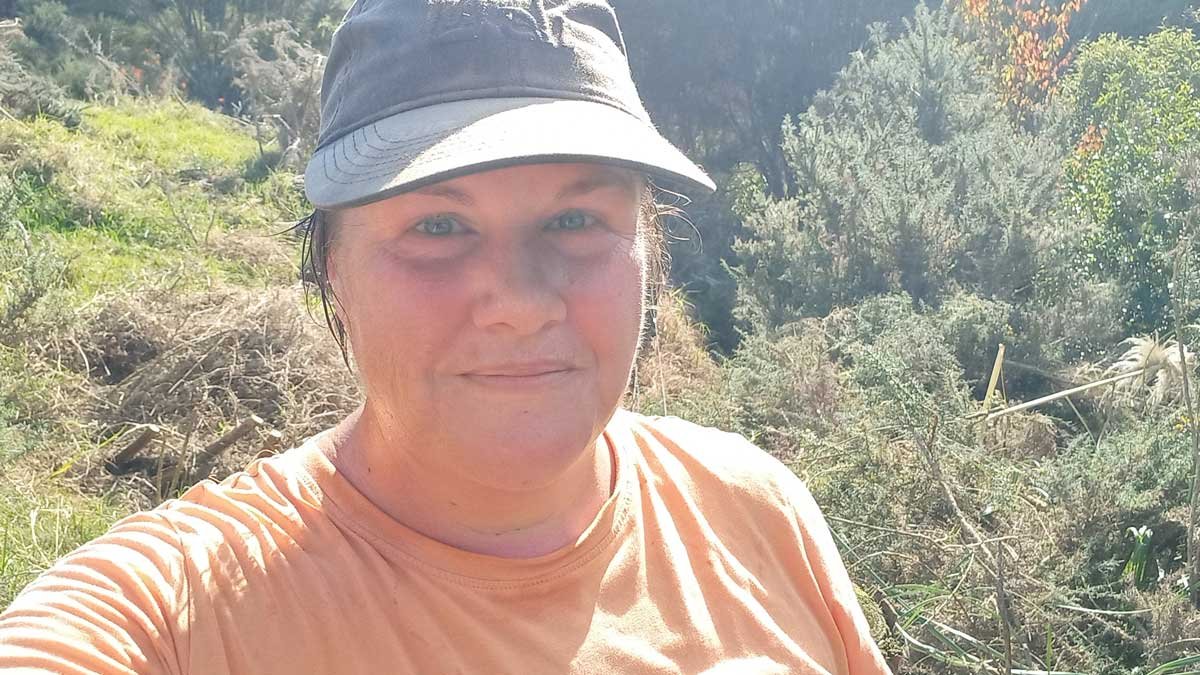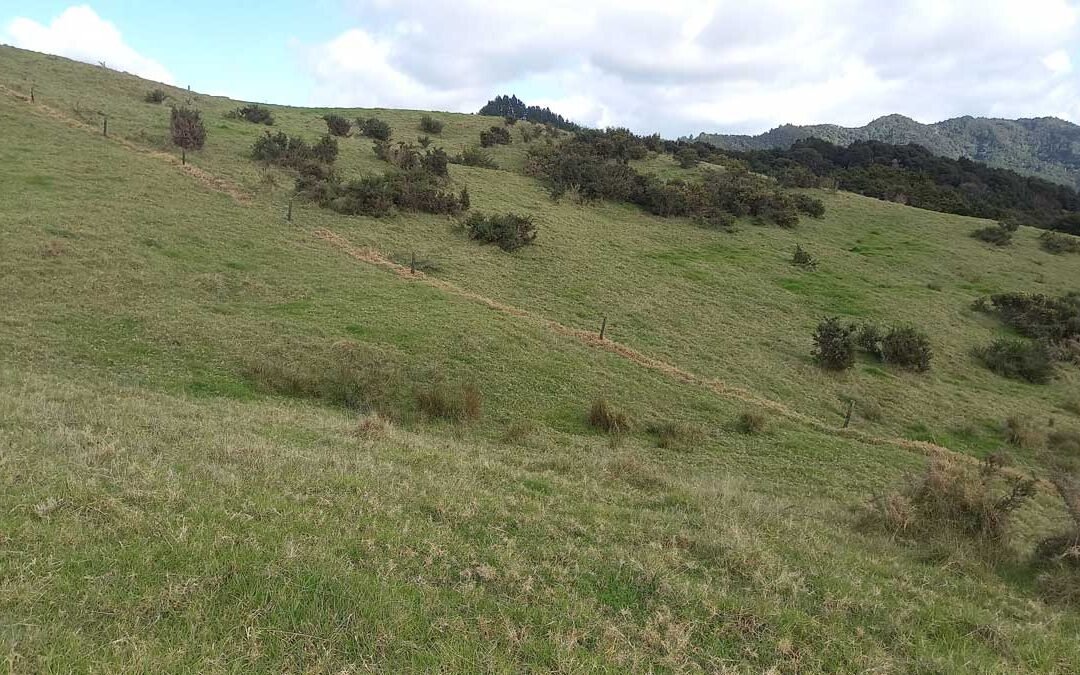When we purchased this property, the paddocks were mostly gorse-free. But within about 6 months of arriving, I found myself wandering in a sea of it.
Somehow (I suspect because it had been mowed or mulched previously), it had just popped up and seemed to suddenly reach waist-height in the blink of an eye.
I’ve been fighting it ever since.
There’s been progress. We have one paddock completely clear, and I’m confident I’ll stay on top of it. A second paddock is pretty close to being clear.
Then there are three paddocks that prove that of all the plants I grow here, I grow gorse the best.

This sea of gorse is in “Paddock 5” and is basically impenetrable.
For the most part, gorse isn’t the worst thing in the world. It fixes nitrogen into the soil; its deep tap roots help to prevent erosion. It can be used as a nurse-species for native forest regeneration, and provides nectar for bees when other food sources are in short supply.
But it also damages our fences. It grows through them, pressuring them in directions they weren’t designed to go. Gorse “earths” the electric current, reducing the ‘zap’ and making it harder to contain the cows.
The Mulch Method
Back in September last year, I began moving a huge pile of mulch by hand – loading up wheelbarrows and manually moving it to where it needed to go.
I took the idea that ‘a little at a time gets the job done’ and applied it to a really big and overwhelming job that basically made me want to cry from hopelessness.
It worked.
It took 220 days, and 332 wheelbarrow loads to move approximately 23 cubic meters of mulch. And now, the mulch pile is gone, but the Mulch Method was born.
The Mulch Method relies on consistency. The amount we actually get done is less important than the fact we get out there and do something – anything – that moves us a little closer to the goal, regularly.
Clearing the fences
I’m not ready to face the idea of completely removing all the gorse from every paddock. That’s a huge job, and I’m not even sure it’s really the goal.

I swear there is a fence in this photo.
But we do need to clear the gorse and grass off our fences. We need to ensure they are tight and able to continue the circuit of electricity that keeps our cattle contained.
And so we began applying the Mulch Method to the fence lines. And we are making progress.
Scroll through to see the initial progress in May.
We need to chop off gorse, pull off the overgrown grass, uncover the lower line where it’s been buried in kikuyu, and ensure the fence is properly connected to the fence posts.
Overall, I think we have around 3km of fences. Some bits require less work, some bits require more.
It’s not exactly easy, but it is achievable with enough time.
Tools for the job
For the most part, we’re doing this by hand. A couple of weeks in advance, I go out and spray as much of the fence line as I need to. I use a mixture of glyphosate (for grass), metsulfuron methyl (for gorse), and penetrant. I hit the kikuyu grass growing up over the wires, and as much gorse as I can reach.
Once things have started dying off, we come along with a few hand and battery operated tools. These include a hand-held mini chainsaw, a pole saw (Richard’s new toy), and a Niwashi knife.

The hand-held chainsaw and pole saw are used to clear the gorse. They’re lighter than a full-sized chainsaw and use considerably less effort than a hand-saw. Plus we charge the batteries during our “Hour of (free) Power”, so they’re basically free to run too.
A line trimmer would be much faster than a Niwashi, but the vibrations really hurt my arms and I actually get more done – with less pain – doing it by hand. Plus the line trimmer seems to be the power-tool most likely to need to go into the shop (this time, because it’s whacked and broken the fence), so it’s frequently not in working order.
Usually, Richard will clear gorse with the chainsaw while I come up behind to pull away the branches (my favourite Showa 305 gloves help considerably – they’re excellent for working with gorse). Then I’ll clear the grass with a Niwashi knife, leaving behind a clear fence.
We have a bucket filled with fencing tools and supplies – hammers, pliers, insulators, joiners, and staples. Most fence problems can be addressed as we work, but occasionally we run across a problem that needs more than just a patch-up.
Moving fences
In a couple of places, there’s some pretty major subsistence going on – the land is slipping away under the fence. This was going on before we got here, but with the gorse out of the way, it’s time to address it.

The only real solution in these places is to move the fence further inside the paddock. Taking the heavy cows off the more delicate pieces of soil protects the environment. It allows the bush to regenerate and hold the land in place.
I don’t mind losing a bit of grazing – protecting the land is always the priority here, but it is a little more complicated than just clearing gorse and grass.
It means mapping new paths for the fence to take, installing new fence posts, juggling the wire available, and a little literal Number 8 thinking. It’s going to take a little bit longer to do, but I think we’re capable of doing it.
A big job
We have attacked this job in the past – but never so consistently. It’s such an overwhelming and unpleasant job that it’s easy to stop, and difficult to begin.
Still, I seem to have stumbled across a method that makes it manageable – and achievable.
As long as we’ve made some progress each week, we’ll get there eventually. We’re pretty close to having two paddocks completed.
The remaining 3 paddocks are a whole other story – there is more gorse, so our progress is definitely going to slow down. But bit-by-bit, we’re going to get there.
Sweating With Pride
Over the month of June, I’m participating in Sweat With Pride to raise money for the Burnett Foundation in conjunction with RainbowYOUTH, OutLine, and InsideOUT.

The goal is to get out and exercise every day. And I will be – I’ll be clearing gorse and grass off fencelines. I call it “Farmercise”.
If you’d like to sponsor me to get out and clear those fence lines – and help Rainbow Communities along the way – my fundraising page is here.
All funds raised go directly to the Burnett Foundation, and are tax deductible in New Zealand.
I’ll be posting my progress on Instagram, and to my Facebook page if you’d like to follow along.













Welcome to the gorse club.